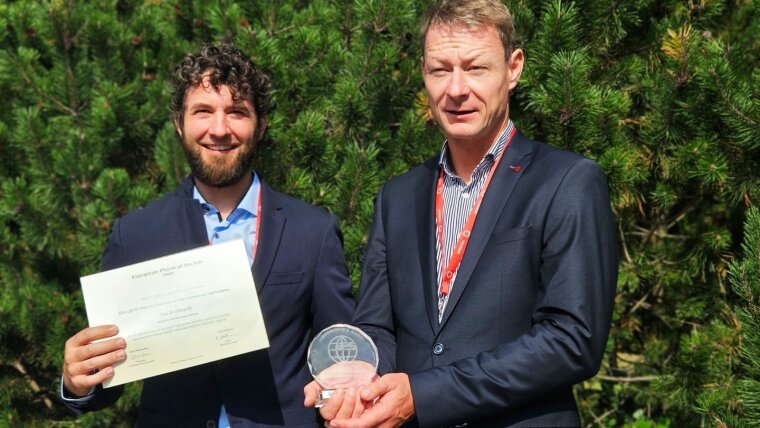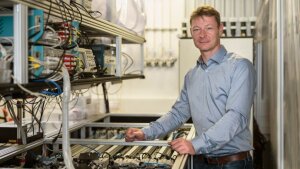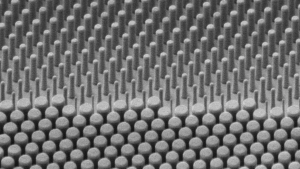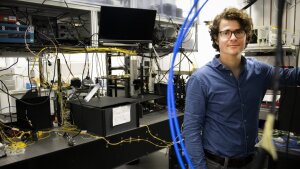Professor Dr. Jens Limpert and Privatdozent Dr. Jan Rothhardt are awarded the EPS-QEOD Prize for Research in Laser Technology and Applications 2024.

PD Dr. Jan Rothhardt and Prof. Jens Limpert with the EPS-QEOD Award of the Division of Quantum Electronics and Optics of the European Physical Society (EPS).
Welcome to the Institute of Applied Physics
Logo IAP
Graphic: timespinThe Institute of Applied Physics (IAP) at the Friedrich Schiller University Jena has a long-standing tradition and competence in design, fabrication and application of active and passive optical and photonic elements. It is also very well-known for its developments in the area of high power laser technology and nowadys also in quantum optics. Collaborative projects with companies ensure practical relevance and feasibility.




